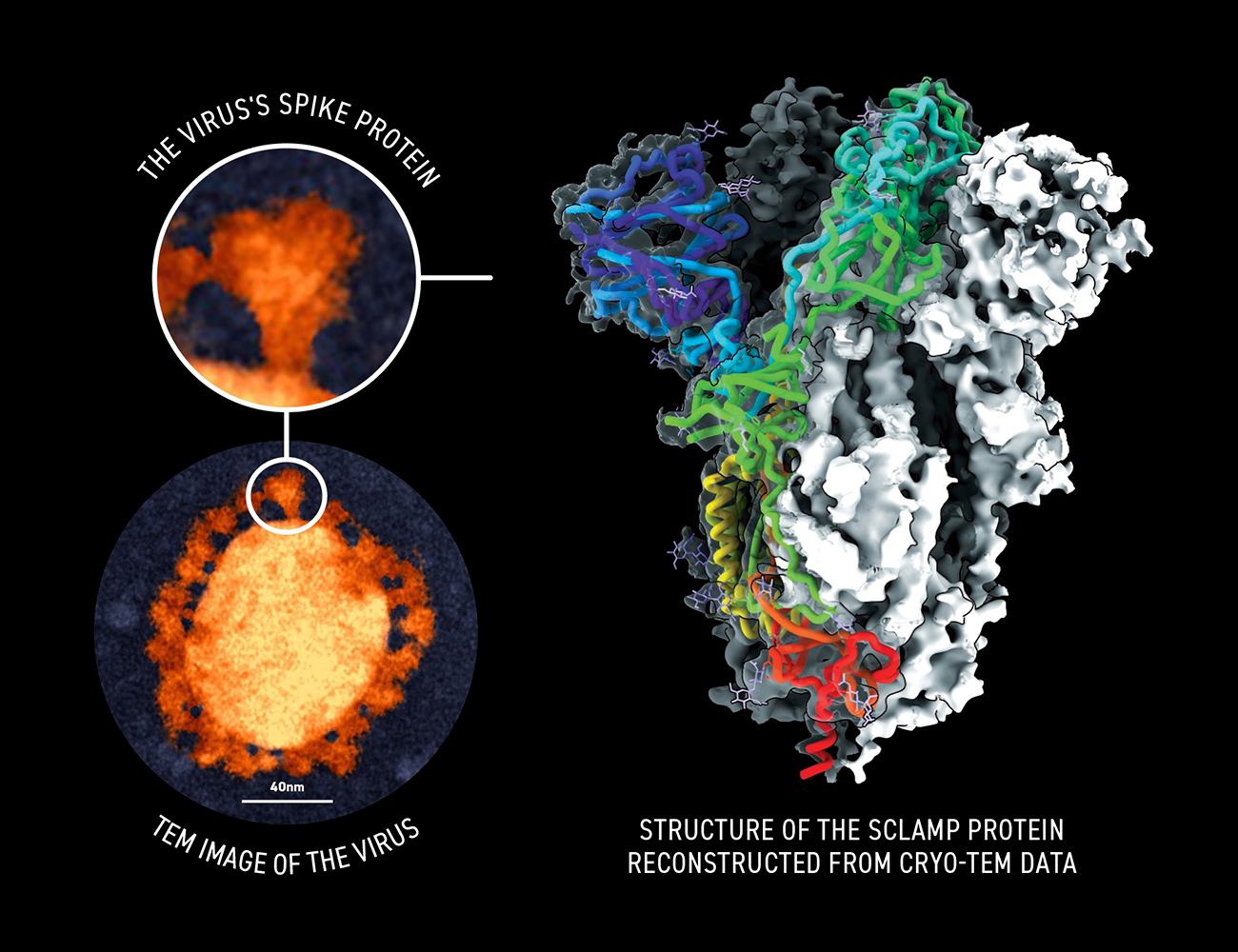Controlling the COVID-19 pandemic by development of a safe and effective vaccine is a major global challenge. This is the third coronavirus outbreak in the past 20 years and is causing unprecedented morbidity, mortality, and economic disruption.
In early 2020, through their existing partnership with the Coalition for Epidemic Preparedness Innovations (CEPI), the University of Queensland (UQ) vaccine development team, lead by Prof. Paul Young, A/Prof. Keith Chappell, Dr Dan Watterson and Project Director Prof. Trent Munro, was tasked with the rapid generation of a vaccine to halt the COVID-19 pandemic.
The UQ team used the system they had already developed known as the Molecular Clamp. This enables the production of stable synthetic proteins that copy important surface proteins from viruses. The system was designed to enable the rapid production of vaccine candidates to prevent the spread of newly emerging viruses – exactly what was needed to tackle COVID-19.
SARS-CoV-2 is the virus that causes COVID-19. Each virus particle is spherical and is covered with proteins called spikes. These spikes latch onto human cells and then change shape to allow the viral membrane to fuse with the cell membrane and deliver the viral genes into the host cell. They are then copied to produce more viruses. To create an effective immune response that prevents infection, the body must react to the spike protein in its pre-fusion state.
The molecular clamp system is designed to lock the spike protein into this pre-fusion state to produce a stable and effective vaccine.
Through January and February, the team developed a large panel of Spike-clamp (Sclamp) vaccine candidates and used transmission electron microscopy at our UQ facility to help identify lead constructs. By mid-February a single candidate had been selected for further development. Images of Sclamp were collected on the new cryo-TEMs at our UQ facility, and single particle analysis carried out. This work revealed the shape of the vaccine candidate at near-atomic resolution and confirmed that it mimics the pre-fusion form found on the virus.

Left: Transmission electron microscope image of SARS-CoV-2 from our linked lab CSIRO’s Australian Centre for Disease Preparedness by Sandra Crameri
Right: Cryo-TEM reconstruction of the Sclamp vaccine candidate by Naphak Modhiran, Daniel Watterson and Lou Brillault
The UQ vaccine is currently in its first clinical trials and UQ and CEPI have signed an agreement with CSL to produce the vaccine in Victoria.
This research will help prepare us for rapid response to future pandemics, potentially saving millions of lives.
Cryo-TEM reconstruction of the Sclamp vaccine candidate by Naphak Modhiran, Daniel Watterson and Lou Brillault
October 15, 2020